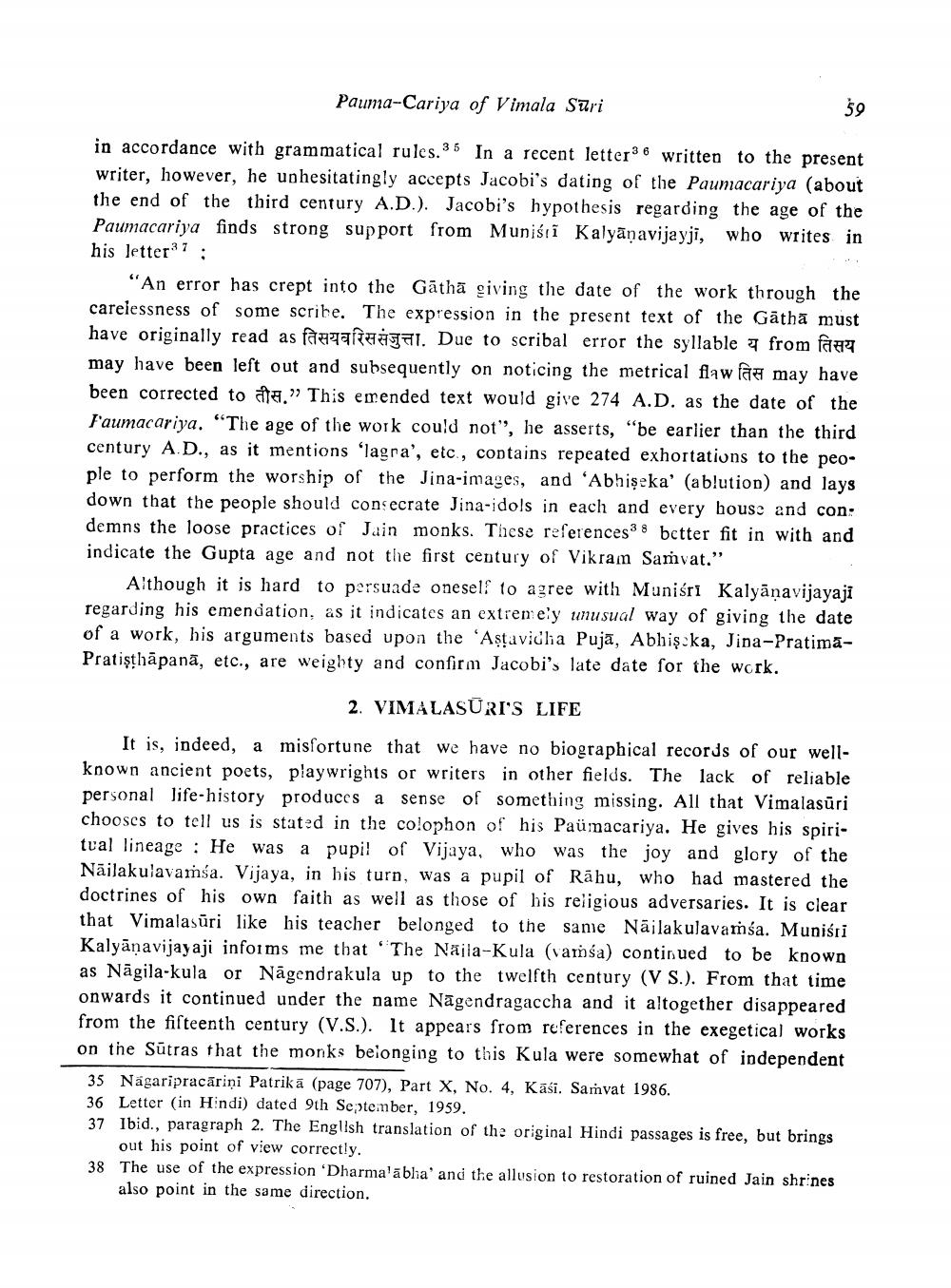________________
Pauma-Cariya of Vimala Suri
in accordance with grammatical rules." In a recent letter written to the present writer, however, he unhesitatingly accepts Jacobi's dating of the Paumacariya (about the end of the third century A.D.). Jacobi's hypothesis regarding the age of the Paumacariya finds strong support from Munisti Kalyanavijayji, who writes in his letter 7:
59
"An error has crept into the Gatha giving the date of the work through the carelessness of some scribe. The expression in the present text of the Gāthā must have originally read as तिसयवरिससंजुत्ता. Due to scribal error the syllable य from तिसय may have been left out and subsequently on noticing the metrical flaw fae may have been corrected to a." This emended text would give 274 A.D. as the date of the Faumacariya. "The age of the work could not", he asserts, "be earlier than the third century A.D., as it mentions 'lagra', etc., contains repeated exhortations to the people to perform the worship of the Jina-images, and 'Abhişeka' (ablution) and lays down that the people should consecrate Jina-idols in each and every house and con: demns the loose practices of Jain monks. These references better fit in with and indicate the Gupta age and not the first century of Vikram Samvat."
Although it is hard to persuade oneself to agree with Muniśrt Kalyāṇavijayajl regarding his emendation, as it indicates an extremely unusual way of giving the date. of a work, his arguments based upon the 'Astavidha Puja, Abhiş:ka, Jina-PratimaPratisthapana, etc., are weighty and confirm Jacobi's late date for the work.
2. VIMALASURI'S LIFE
It is, indeed, a misfortune that we have no biographical records of our wellknown ancient poets, playwrights or writers in other fields. The lack of reliable personal life-history produces a sense of something missing. All that Vimalasūri chooses to tell us is stated in the colophon of his Paümacariya. He gives his spiri tual lineage He was a pupil of Vijaya, who was the joy and glory of the Näilakulavama. Vijaya, in his turn, was a pupil of Rahu, who had mastered the doctrines of his own faith as well as those of his religious adversaries. It is clear that Vimalasuri like his teacher belonged to the same Nailakulavamsa. Munisti Kalyanavijayaji informs me that The Naila-Kula (vamsa) continued to be known as Nagila-kula or Nagendrakula up to the twelfth century (V S.). From that time. onwards it continued under the name Nagendragaccha and it altogether disappeared from the fifteenth century (V.S.). It appears from references in the exegetical works on the Sutras that the monks belonging to this Kula were somewhat of independent 35 Nagaripracāriņi Patrika (page 707), Part X, No. 4, Käsi. Samvat 1986.
36 Letter (in Hindi) dated 9th September, 1959.
37 Ibid., paragraph 2. The English translation of the original Hindi passages is free, but brings out his point of view correctly.
38 The use of the expression 'Dharma'abha' and the allusion to restoration of ruined Jain shrines also point in the same direction.




